 I had the opportunity to sit down with comedian Amy Schumer, best known for her work on Comedy Central’s Inside Amy Schumer, which just wrapped its third and final season. Her new film, Trainwreck, is hilarious and announces to the world that she’s the next great comedic star. I asked her some questions about the film’s festival response, her moments of comedic tightrope walking, and how working with Judd Apatow allowed her to realize the potential of film as a storytelling medium.
Eric: How was premiering your film at South by Southwest and what did you think of the reaction?
I had the opportunity to sit down with comedian Amy Schumer, best known for her work on Comedy Central’s Inside Amy Schumer, which just wrapped its third and final season. Her new film, Trainwreck, is hilarious and announces to the world that she’s the next great comedic star. I asked her some questions about the film’s festival response, her moments of comedic tightrope walking, and how working with Judd Apatow allowed her to realize the potential of film as a storytelling medium.
Eric: How was premiering your film at South by Southwest and what did you think of the reaction?
Amy: Dream come true. Beyond dream come true. I’m getting choked up thinking about it right now. I was sitting next to my sister. We had seen some test screenings, and people had enjoyed it, but…people were applauding, missing the punchlines. It was one of the best nights of my life. Missing the punchlines is a great ass problem to have. (laughs) I’ve had roles in movies, but this is beyond fun.
E: What was the biggest problem in moving from television to film, in terms of writing and acting?
A: I filmed the third season of the show after the movie, and that was a lot different. I got a trailer, even if it was just like a port-a-potty with a bench in it. But Judd [Apatow] creates such a familial vibe on set, it wasn’t overwhelming. I wanted to set the vibe around the set. Everyone was going to joke with each other, and if Frank the boom mic had his crack showing I’d put a pencil in it. On the show, the cast and crew were so close with each other. On a film set, people are there for so long that you really miss them when they’re gone. On Vanessa Bayer’s last day, I realized, “Oh, I’m not going to see you for 14 hours each day for this week?” And on my TV show I’d see people once a day, so it’s different.
E: One of my favorite scenes in the movie is a bedroom moment with John Cena. The red-band trailer had some different dialogue and takes…did that scene just have a free flow to it?
A: That scene was written, and with every scene I worked hard on the script to ensure that every “uh” was included. But in the moment, we just see what happens. LeBron was amazing, but John Cena just brought things out of nowhere. When he starts speaking Mandarin, that’s all him. I was laughing so hard, at a certain point I felt like I was going to be cut out of the scene. He’s an endless array of jokes. In the movie theater scene later, it wasn’t scripted that his threats were really gay, but it just started happening that way. He wasn’t scripted with that arsenal of weird shit to say.
E: You mention LeBron, and he’s really funny in the movie. Was the role written for him or just a random big-name athlete?
A: It was totally written for him, but thinking that we would get another great athlete instead. And then, Judd and Bill met with LeBron and he was down to do it. He was the biggest pleasure in the world. He was so funny and we would whisper, “Do you think we could make a Cleveland joke?” We were ready for him to turn on us but he was down for whatever. Athletes acting can be so uncomfortable…like Shaq or Brett Favre in There’s Something About Mary. That’s the joke (to be uncomfortable), but it doesn’t work as well.
E: Speaking of celebrity roles, where did the Daniel Radcliffe dog-walker movie-within-the-movie come from?
A: I came up with this dog-walker concept where there were from the wrong side of the tracks, and it could’ve been whoever. I initially wrote it for Daniel or Joaquin Phoenix, someone with no business being in this movie. We thought after we shot it that maybe we wouldn’t use it, but we had Daniel and Marisa Tomei, so we had to use it. I hope that wasn’t too distracting since we shot it and it was ridiculous. It was basically making fun of movies. People were so confused seeing Daniel smoking cigarettes with all of those dogs outside of Bryant Park while we were shooting.
E: One thing I noticed that must be intentional is that the film feels like it’s a traditional romantic comedy with every single role reversed in terms of gender. The men are the sensitive ones are, you’re the womanizer. What’s the basis for that?
A: Most of the men in my life are very sensitive, more than me. I’m not like…I did the math yesterday, and I’ve slept with like 25 people. I don’t know if that’s typical or not for a girl. I mean, I’m 33, so yearly that’s not bad. It’s just been my experience. I wanted to make sure this role was clear. I experienced Samantha on Sex and the City as mentally ill, and I think a lot of times when guys try to write a female comedy they’ll write the “slut” role, and when a friend of mine would act like that I’d want to take her to the hospital. I really wanted to make sure this girl was preserved as a human being, and…I’ve spread myself too thin at times for unhealthy reasons. And everyone wants love. As for the male roles, it was funny for LeBron James to be really invested in his friend’s relationships. There was this whole part of the movie that was cut out, the first scene of the movie: me talking to Jon Glazer in the office. And I said, “Men don’t hurt women, women hurt men.” And then he said, “I’ve been hurt by every woman I ever met.” It’s just that idea that there’s a stigma but there are a lot of really sensitive guys. It’s not a male-female thing.
E: Obviously you wrote from personal experience. How much would you say is autobiographical?
A: Forty percent? Some of the things were straight up. One time I was really high, and my boyfriend saw an email exchange with a guy where we were getting into each other, and I had just smoked pot. He wanted to talk about it and I just wouldn’t have it. My dad and my relationship with my sister are there…I was falling in love when I wrote this movie, too. I never had that revolving door in Manhattan where I was fucking non-stop, but yeah.
E: What was the best joke that got cut from the film?
A: There’s two that come to mind right away. One joke was in my dad’s snow globe collection, where one of them was made and in the script, but it was from Auschwitz. “They make those there?” But they told us no. And then I had a joke with my sister when she’s pregnant, where I asked her if she was going to keep it, and she’s like, “No one aborts their second child.” And I said that they do it in China and they’re doing a lot better than us. But China’s the biggest market for film so they wouldn’t let it happen. And there was one line that I miss which was on the Staten Island Ferry between me and a guy. I was smoking pot and looking around and this man was staring at me, so I said, “Oh, are you proud of every moment of your life, sir?” Which I think is a good tag for what this movie is about.
E: There’s a particular dance sequence near the end of the film that’s hysterical. What type of work went into choreographing that?
A: That was Judd’s pitch to do that dance. I just wanted to come out and be a mascot and dive into something. I’m not a dancer. I went to the dance auditions and the choreographer would walk us through it, and they’d have it and it’d be the best you’d ever seen. Three months, every single weekend, two hours Saturday and Sunday…working with the choreographer. Just to get it. We did some takes where I did the dance really well, and some where I mess up the whole time. And the editors chose the combination. But it was really hard! Every weekend.
E: Judd Apatow directed here and you wrote, but do you ever want to write and direct a film?
A: I don’t think I’d ever want to direct something I was in. I directed scenes in my TV show that I’m not in very much. But I cannot imagine directing something. I really like it, though. I would love to direct something I’m not in.
E: What did Judd bring to the film that changed the final product?
A: So much. He’s a genius, for real. I’ve never written a movie and he understands the balance of things. “Okay, we can’t have the audience sad for that long, and we haven’t seen this guy for a while, and here we need a scene where we see the two of them like never before.” He just understands what people want to see. I’m thinking of things in the budget I’m used to working in: I think the scene could be in a recreation center, and then he says, “What if it’s at the [Madison Square] Garden?” And I’m like, “What garden?” He created an environment where we all feel free to play and also he directed me in a way that I felt safe yet very vulnerable. I went further with things than I thought I could. I lucked out. Jesus Christ.
Trainwreck opens nationwide on Friday, July 17th.

 Ant-Man
Ant-Man
 Amy
Amy
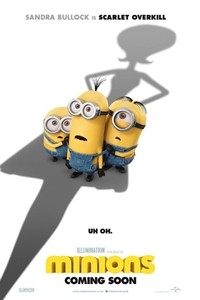 Minions
Minions
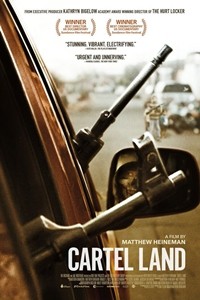 Cartel Land
Cartel Land
 Self/less
Self/less
 Magic Mike XXL
Magic Mike XXL
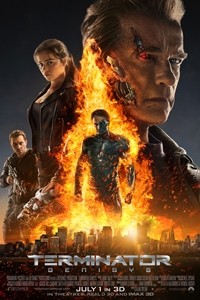 Terminator Genisys
Terminator Genisys
 The Overnight
The Overnight
 Escobar: Paradise Lost
Escobar: Paradise Lost
 Ted 2
Ted 2
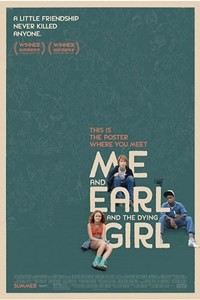 Me and Earl and The Dying Girl
Me and Earl and The Dying Girl
 Inside Out
Inside Out
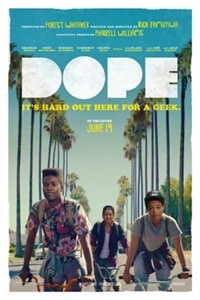 Dope
Dope








